Is this 5-0 or blunt? Something in-between them.
Today, we will talk about the backside Salad grind.
Once you know how to lock in correctly, it is a pretty stable trick: you can sit back and grind as long as you want.
I prefer this trick on a ramp, but you can do it on a ledge, too. This time, we are talking about Salad grind on the ramp. Please let me know in the comment if you want me to talk about it on the ledge.
Summary
Push and slide your board to lock in.
Adjust how hard you pump your body and push your board, and let it slide on the surface of the transition before locking in. This pushing motion allows you to push through against friction after locking in, too.
Stay inside.
Due to pumping and the abovementioned pushing motion, you will wind up getting on the flat surface of the transition if you don't do anything. Try to keep your body inside the ramp and push your board against the coping.
Keep your shoulders open when locking in.
Keeping your shoulders open allows you to see where you will be going after locking in without seeing it directly. Although you should look at the rear truck when you lock in, being able to see where you will go largely helps you know how much inward you should lean.
Simulation
Hit the icon to initiate 3d simulation.
Definition of Salad Grind
Let's start with the definition of this trick
Backside salad grind is a trick that you lock on the obstacle with the rear truck while keeping the front truck turned backward.
Some may think this is just a crooked version of a 5-0 grind, and they may be right.
In fact, sometimes, Salad grind can be somewhat like a failed version of 5-0 grind. So go ahead if you want to call it 5-0.
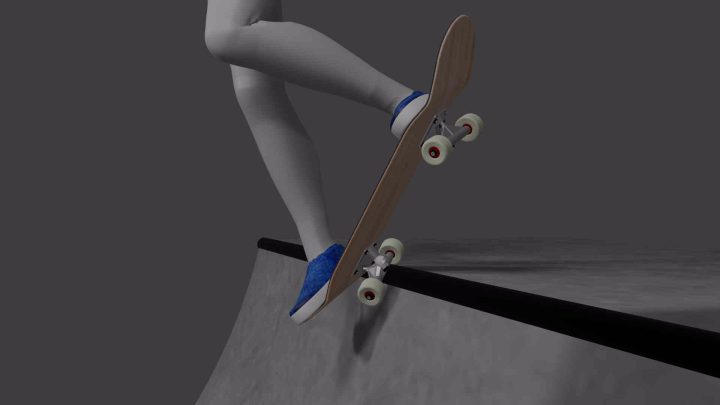
Difference between Salad grind and 5-0 grind
I think Salad grind is different from good old 5-0 against what some people say.
As part of the reason I call it the Salad grind, NOT 5-0, I think it has some unique features that 5-0 grind doesn't have.
Let's take a look at them more in detail in the next section.

Features of Salad Grind
Feature #1 The tail dips down lower
In a Salad grind, you can dip down the tail lower than the flat surface of the obstacle.
This is something you cannot do in a 5-0 grind where the tail hits the obstacle.
In a Salad grind, you turn your board backside. So the tail has room to go lower than the flat surface of the obstacle without hitting it.

Feature #2 Heelside wheel supports your body weight
Unlike 5-0 grind, where the rear truck supports your body weight, in Salad grind, almost all of your weight is on the heelside wheel of the rear truck.
That said, although it seems and feels different from 5-0 to me, I don't have the correct definition of this trick.
In fact, I think the difference between Salad and 5-0 can be ambiguous. So please share your thoughts in the comment section below if you have any.
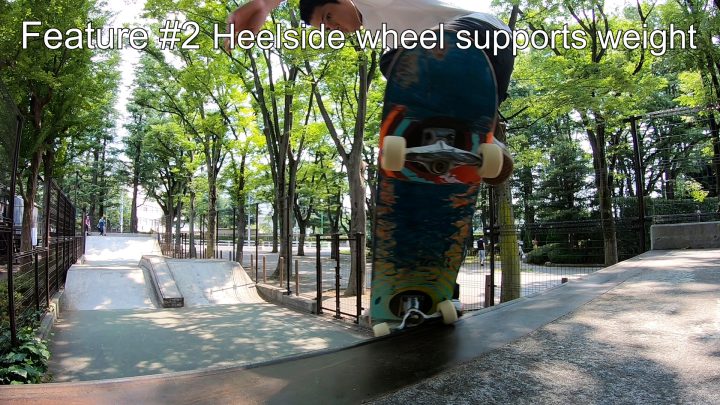
Physics of Salad Grind 1
Premises
Now, the question is how to do it. Let's not say, "approach an obstacle and commit."
Instead, let's break it down from a scientific point of view.
We will start by sorting out the major forces and figure out how to effectively utilize them.
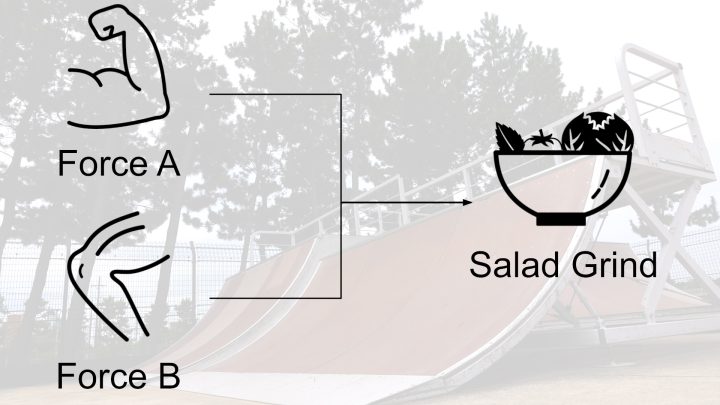
Force #1 Gravitational force
Gravity pulls your body down toward the ground, whether it's a ramp or ledge that you are skating.
In order to lock the wheel up on the coping, you have to pump and raise your body first and assist your board reaches the coping.
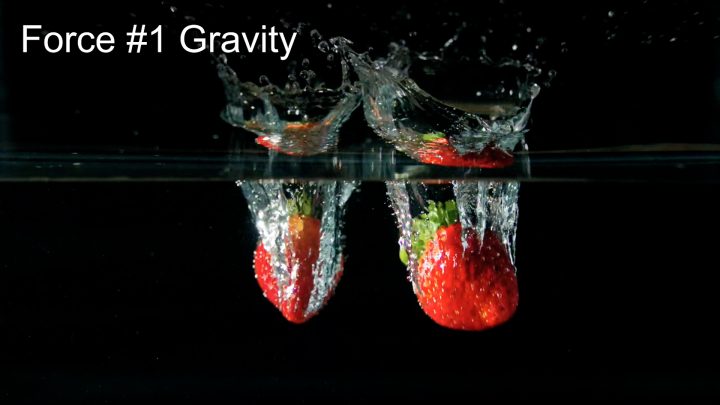
Think about it this way: When you look at the movement horizontally, your body goes up and down like a parabola. If the vertex of the parabola goes higher than the transition, you will wind up getting on the deck of the ramp. It's just like when you throw a ball against the transition: the ball gets on the ramp's deck if it's too fast. Although there is a way to avoid getting on the deck, and we will get down on that in a minute, the ball shouldn't be going up too fast in terms of the vertical force.
This means the ball needs to have enough energy to climb up the ramp but has to lose its energy by the time it reaches the coping.
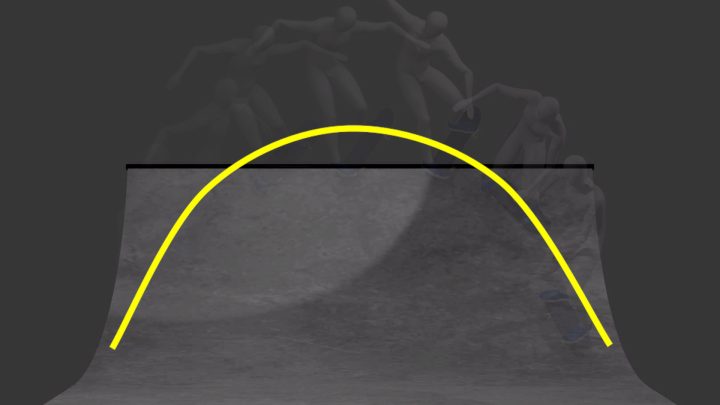
If you push your board too late or pump too hard, you will launch upon the obstacle. Adjust how hard you pump, so the upward momentum you generate becomes small enough by the time you reach the top of the parabola.
After locking in, as I said earlier, the heelside wheel of the rear truck supports your body weight.
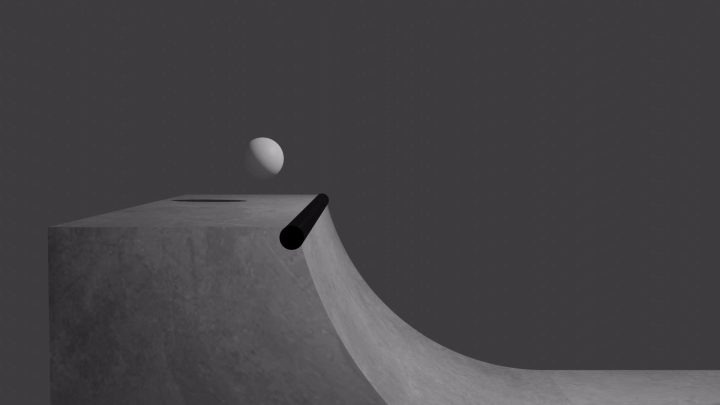
Physics of Salad Grind 2
Force #2 Horizontal force
Let's take a look at the trick from above.
Whether it's a ramp or ledge, the concept is the same: you approach an obstacle at a certain angle.
Without doing anything, the horizontal momentum remains after locking in, and you will launch yourself upon the obstacle.
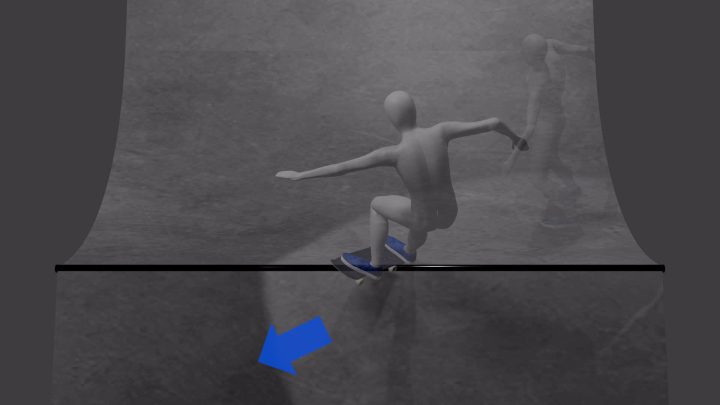
So you have to adjust the direction of the momentum by generating a force that offsets the horizontal energy and makes it parallel to the obstacle.
To do this, pump your body against the obstacle to keep your body inside the ramp. Adjust how hard you pump depending on how fast you are going and the steepness of the ramp.

Physics of Salad Grind 3
Force #3 Friction
While grinding, your board receives friction from the obstacle. So you must keep your weight behind your board to push it through against the friction.
In that sense, Salad grind is much like a powerslide: you have to keep your weight on the back and push your board forward against the friction.
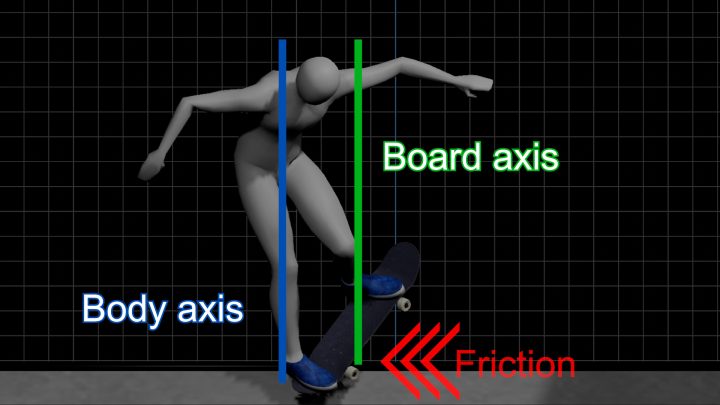
Since you have to push your board forward, timing becomes crucial.
You should start the pushing motion before reaching the coping while keeping your body inside the ramp.
Again, otherwise, you will shoot your board upon the deck. In my case, I try to push out my board when I'm around 30cm away from the coping.
It feels like a powerslide on the transition: keep a lot of weight on the heelside and let it slide before locking in.
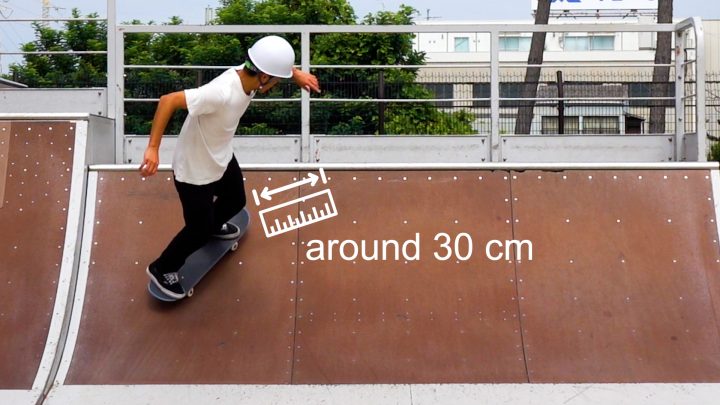
Also, I recommend keeping your shoulders open as you lock in.
This allows you to face forward, making it easier to direct your body's momentum parallel to the obstacle.
In fact, my focus is already directed forward even before locking in. Although I look at my rear truck when I lock in, as my face is already directed forward, I can see where I will be going at the corner of my sight. This largely helps me tell what I should do next, like how far I should lean inward.
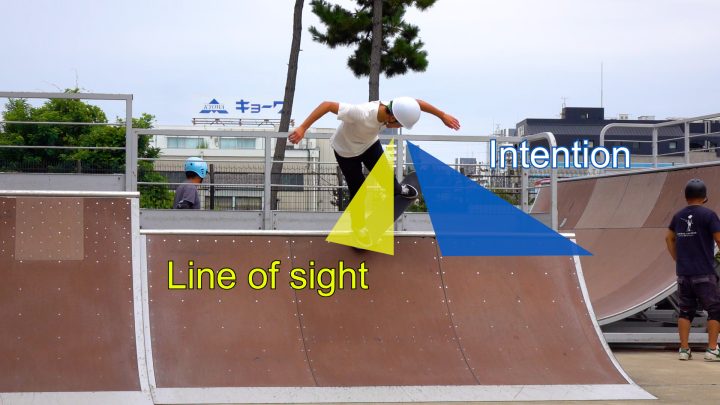
Tips
Let's study the trick further in detail.
Proceed from the links below.
Trouble Shooting
Let's study the trick further in detail.
Proceed from the links below.
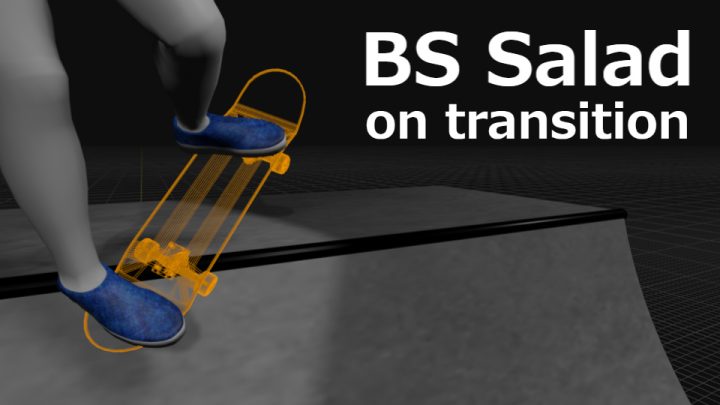


 Convert your video into 3D
Convert your video into 3D Facebook
Facebook Twitter
Twitter



